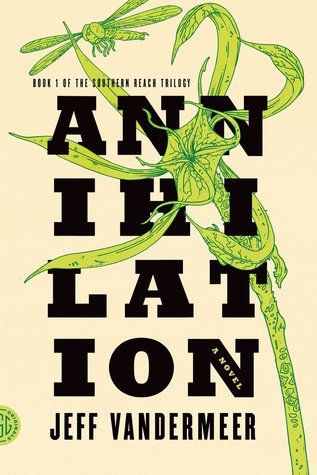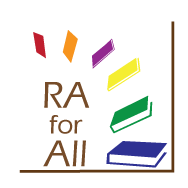I feel like I am pretty good at checking my privilege as I provide service both to patrons and the library workers I train. I am not perfect, none of us are, but I try. I think about representation in the books I suggest, and when I supervised a department, I worried about physical accessibility to our collections and building.
However, a handful of years ago my friend and colleague,
Karen Toonen [Naperville [IL] Public Library] spoke up at an ARRT meeting and asked a simple question of the Steering Committee, “Can we switch this document to Arial, a sans serif font?”
Why that question? Because Karen, like many people out there, was mildly dyslexic and this one simple change could make our work more accessible without much effort.
That one question, changed the way I thought about everything I did. Karen knows this. I thanked her that day and have reminded her how she opened my eyes many time since. I never thought that changing a font could make such a big difference.
I asked Karen to share her insight and the research she has compiled by others on serving dyslexics and below is her guest post on the topic.
You can reach out to Karen for more information by
clicking here or by leaving a comment on this post.
And once again, thank you Karen. Your honesty and willingness to speak up has helped so many.
____________________________________________
Dyslexia, Fonts, and Formats
In the early 1980s, the common wisdom was “If the child can read, they aren’t dyslexic.” I could read. I had good reading comprehension. So, I wasn’t dyslexic. But no medical condition is that simple. When Overcoming Dyslexia, by Sally Shaywitz, M.D. was published in 2003, I realized I was (mildly) dyslexic. (I could read because I made everything a “sight-word”. I have almost no phoneme understanding.) Learning that dyslexia was not one thing was a revelation to me.
Now, as I age and after a head injury, I can tell my dyslexia related problems are getting worse. Because I am an adult witnessing my problem getting worse, I hope I can explain better to some of you little things you can do to help people with dyslexia.
Many examples attempt to show what dyslexics see when they look at a page:
However, different dyslexics have different issues. No one can capture all the problems categorized as dyslexia.
And for some of us, if we concentrate hard enough, we can read. Given time and energy, we can keep the letters from moving, shifting, or flipping. We can use a bookmark to keep our eyes from jumping across multiple lines as we read. But that doesn’t mean we aren’t dyslexic. Instead, it means we get mentally exhausted and emotionally frustrated when reading long passages of text.
But as scientists learn more about dyslexia, they are also discovering there are some easy things anyone can do to make it easier for us to read.
Fonts:
No font is going to “cure” dyslexia, because dyslexia isn’t a visual problem. However, research has shown that sans serif fonts make eye-tracking easier and reading speed faster. For example, switch to Arial – not New Time Roman – for your email, articles, and papers. Other standard san serif fonts would be Calibri, Verdana, Helvetica, and Gill Sans.
It would be glorious if book publishers took note and changed to using sans serif fonts. Unfortunately, Times New Roman has such a strangle hold on publishing, even the article above is in Times New Roman! The readability of serif versus san serif fonts for the general public open to debate – largely because serif fonts dominate the print world.
But as librarians, what do you publish your booklists and handouts in? What font do you use for call numbers, library signage, program guide, or website? Every small change can have greater impacts than you realize.
As librarians, we also need to educate people about fonts that may be easier for them. For example, a font that is designed to be easy for dyslexics to read and is freely available is Alberado Gonzalez’s OpenDyslexic.
(Christian Boer does an excellent job of explain the science behind the graphic design of a similar licensed font, Dyslexie.)
OpenDyslexic is now standard on most e-book readers. But not everyone who can benefit from it knows the font even exists! As reading advocates, we can help spread the word! If someone mentioned eye strain, show them the font face as well as font size options available in e-books.
I also discovered a Chrome extension that turns website text into OpenDyslexic. Does your website work if someone overrides the font your library picked? (RA for All is a great example of accessibility!)
Anecdotally, I can read a (Times New Roman) print book for about an hour before getting a migraine. I can read an e-book in OpenDyslexic (and sepia background) for at least 4 hours before getting a mild headache.
Also, if you use Dewey, how many numbers do you allow after the decimal? The longer that string is, the harder it is for dyslexics to make the numbers not transpose. Please, dump Dewey for music collections! Your dyslexic staff and users will praise you.
Formats:
I strongly believe it’s hypocritical to tell people to not apologize for their reading tastes, but then start judging them for their reading format. If you want to be an accessibility champion, realize your way of reading isn’t the only way!
Don’t be an e-book snob! The best enhancement any e-book can give is the ability to read. Many readers can benefit from customizing font face, font size, background color, and spacing between lines. Just because you prefer print, doesn’t mean someone else doesn’t benefit from digital. Don’t talk down e-books in public spaces of your library. Imagine it’s a reader’s only option to be able to read. I guarantee after hearing you say e-books are inferior, they will never ask you for help – on any topic.
Don’t jump on the “listening isn’t reading” bandwagon. Think about walking up a blind person or to a veteran whose traumatic brain injury suddenly prevents them from reading. Imagine explaining that since they can’t read print books, they will no longer be able to read for pleasure or information. Go back and look at the simulations of what reading print is like for some dyslexics. Would you enjoy engaging in that battle for hours? Audiobooks are not cheating! In fact, audio is some people’s only option.
In FY17, National Library Service for the Blind and Physically Handicapped helped 419,000 readers with different accessibility issues. Their users vary from 83% with visual impairment, 6% with physical impairment, 5% with organic reading disability, to people like me who get headaches from reading. We shouldn’t have to live without story! We have a right to information sources just like everyone else! Audiobooks are not cheating, but some people’s only option. NLS also recommend audiobook users check out Bookshare.org and LearningAlly.org.
Even librarians who accept audiobooks often express a dislike for Audible. Instead, why not lobby them to release their Audible-only audiobooks as MP3 CD which we can add them to our collections? As Jez Layman pointed out “Audiobooks are Having a Moment”, the demand is growing across all readership. If Amazon became an audiobook publisher of those “Audible only” titles, how many people would have access to more wonderful books?
A few years ago, I realized I loved Mary Robinette Kowal as a narrator, but had never read her as an author. I couldn’t find her books in audio to buy for my library, and thought that was very weird – for an author who was also a narrator. They are Audible only! (Please, don’t tell me I’ve betrayed my profession because I became an Audible subscriber. If you can buy books, why can’t I?) For many library users, including me as a child, paying for an Audible subscription isn’t an option. Being poor shouldn’t limit access to materials. Please Amazon/Audible, let me libraries give you money in exchange for materials!
Being an accessibility advocate largely means not judging. It also means a little extra thought at times. It means being aware that our font selections on promotional materials and signage are more than design choices. It means helping that e-book user, who loves that he can read books again – but can’t check out his own books because the font of the controls and interface are too small for him to read. It means stopping the debate about what formats are “really reading” as well as what genres are “worth reading”. Help people access story and information in whatever format they want! Then you are being an accessibility champion.













